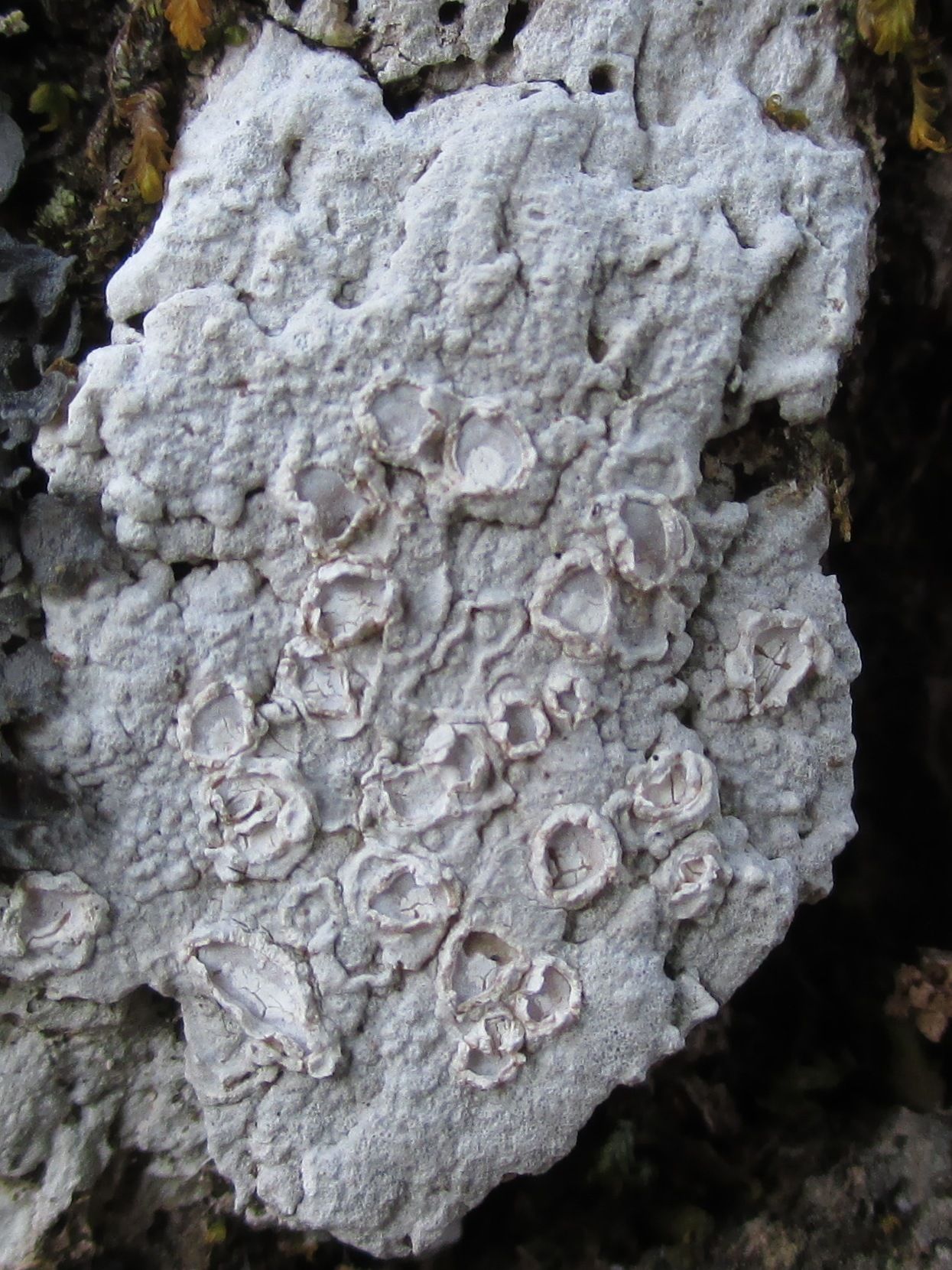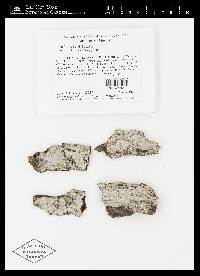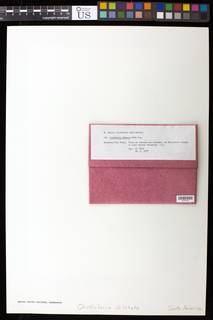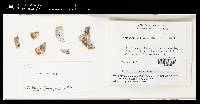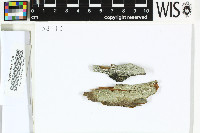
- Home
- Search
- Images
- Species Checklists
- US States: O-Z >
- US National Parks
- Central America
- South America
- US National Parks
- Southern Subpolar Region
|
Pseudochapsa dilatata (Müll. Arg.) Parnmen, Lücking & Lumbsch
 (redirected from: Thelotrema dilatatum (Müll.Arg.) Hale) (redirected from: Thelotrema dilatatum (Müll.Arg.) Hale) |
|
|
Family: Graphidaceae
[Chapsa dilatata (Müll. Arg.) Kalb, moreOcellularia dilatata Müll.Arg., Thelotrema dilatatum (Müll.Arg.) Hale] |
MB# 801521 TYPE. BRAZIL. Rio de Janeiro. A.F.M. Glaziou 5531 (G, G-G-180586/1 lectotype designated by Hale 1974; BM, isolectotype). Description. Life form: lichenized fungus. Thallus crustose, thin, endophloedal to epiphloedal, pale greenish gray, dull, 4-8 cm diam.; vegetative diaspores absent. Photobiont Trentepohlia alga. Ascomata chroodiscoid apothecia, dispersed, erumpent, round to irregularly elongate, up to 3.0 mm wide; thalline rim thick, erect to recurved; exciple not persistent; disk flat, white-pruinose. Hymenium to ~60 μm high. Asci 8-spored; ascospores hyaline, 8-celled, 15-25 x 5-8 μm. Chemistry. Stictic and constictic acids. Substrate and Habitat. Corticolous on trees. Distribution. Neotropical, north into southeastern North America; in North Carolina found in the Coastal Plain ecoregion. Literature Hale, M.E., Jr (1974) Morden-Smithsonian Expedition to Dominica: The lichens (Thelotremataceae). Smithsonian Contributions to Botany 16: 1-46 (description as Ocellularia dilatata). Hale, M.E., Jr (1978) A revision of the lichen family Thelotremataceae in Panama. Smithsonian Contributions to Botany 38: 1-60 (description as Ocellularia dilatata). Müller, J. (1895) Thelotremeae et Graphideae novae quas praesertim ex hb. Reg. Kewensi exponit. Journal of the Linnean Society. Botany 30: 451-463 (original description as Ocellularia dilatata). Parnmen, S., R. Lücking & H.T. Lumbsch (2012) Phylogenetic classification at generic level in the absence of distinct phylogenetic patterns of phenotypical variation: a case study in Graphidaceae (Ascomycota). PLoS One 7(12): e51392, 1. |
